It’s a commonly asked question: When is the best time to go to Galapagos? There are many answers, depending on what you want out of your Galapagos trip. If you want to see the reptiles and mammals that the Galapagos Islands are famous for, you may want to consult this calendar to help you plan your trip.
Just like the birds, the mammals and reptiles in Galapagos follow certain cycles of breeding, feeding, mating and other life functions. These behaviors vary during different times of the year and also from island to island. For example, if you want to see the bright red-and-green “Christmas Iguanas” of Española, you should go in December or January.
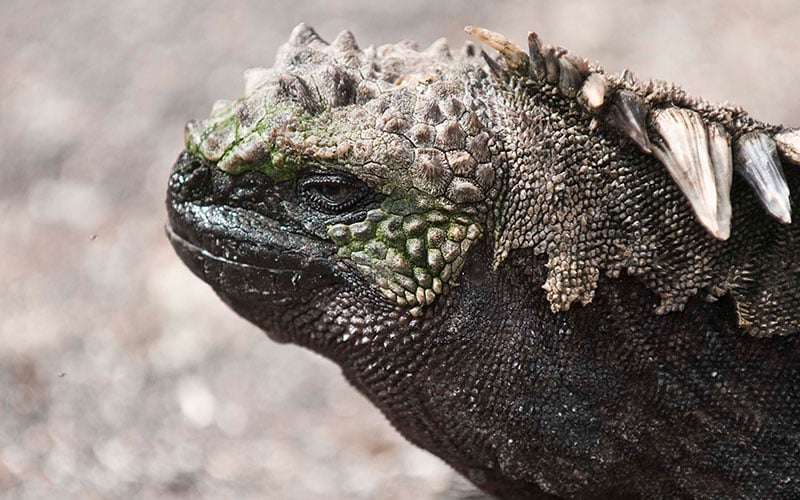
January:
Española Marine Iguanas are brightly colored
Green Sea Turtles are laying eggs
Isabela Land Iguanas begin breeding season
Giant tortoise eggs still hatching
February:
Santa Cruz Marine Iguanas begin nesting
March:
Fernandina and North Seymour Marine Iguanas nesting
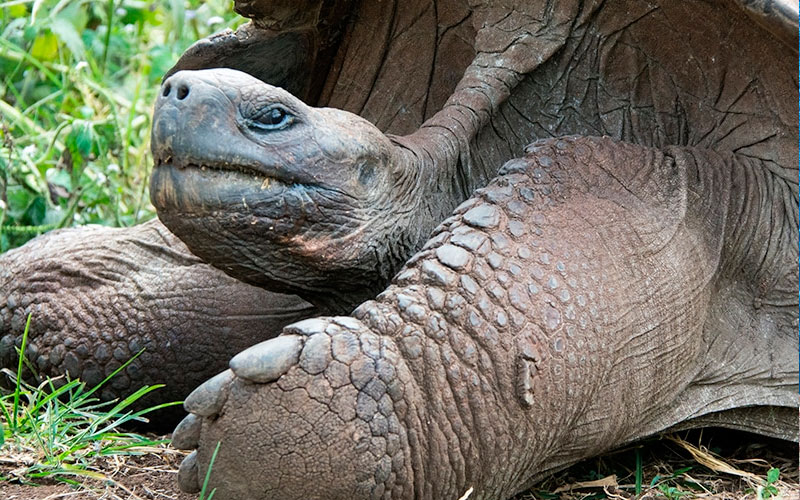
April:
Giant Tortoise hatching season ends
Sea turtle eggs begin to hatch
Isabela Land Iguana eggs hatch
May:
Green sea turtles hatching on Punta Cormorant, Puerto Egas and Gardner Bay
Santa Cruz Marine Iguanas hatching
June:
Santa Cruz Giant Tortoises migrate down from the highlands to the lowlands to begin mating season
Humpback Whales migrate through Galapagos
Good time to see whale sharks off of Darwin and Wolf Island, until November-ish
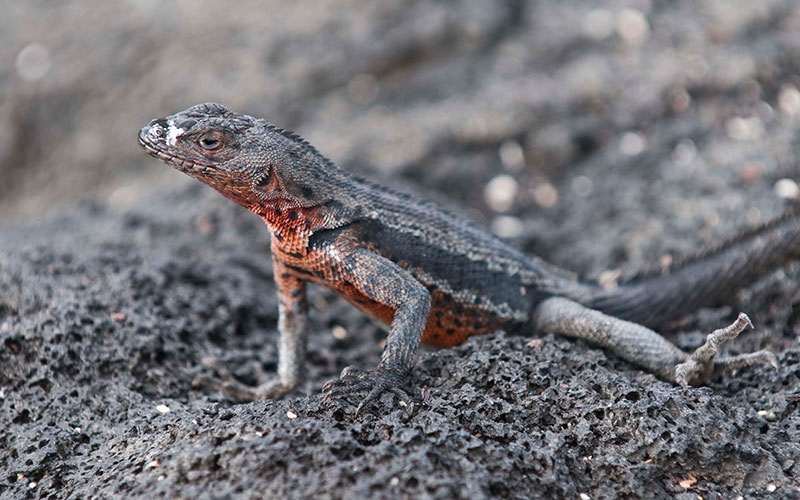
July:
Lava Lizards begin mating behavior which includes “push-ups.” This will continue into November
Whales and dolphins common, especially in the waters between Isabela and Fernandina
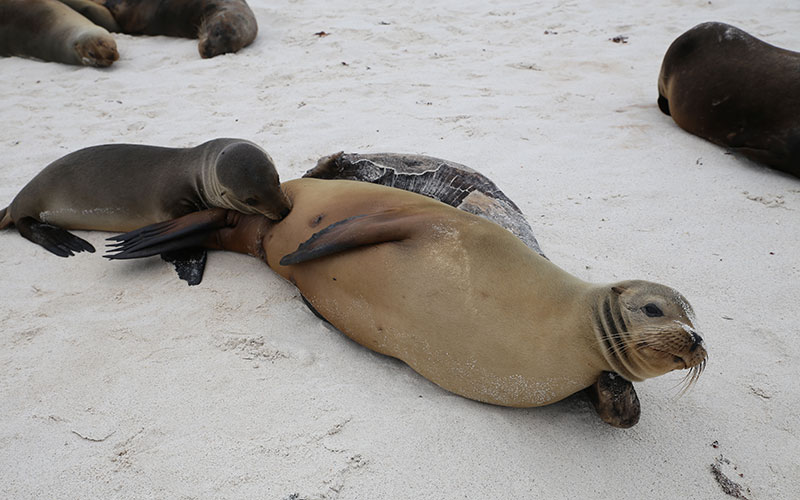
August:
Giant Tortoises on Santa Cruz migrate back to the highlands
Galapagos sea lions begin to give birth, pups common
September:
Sea lions very active as breeding season kicks off: males often fight on land and in the water to defend their harems
October:
Galapagos Fur Sea Lion mating season begins
Giant Tortoises lay eggs
November:
Good time to see sea lion pups at nurseries
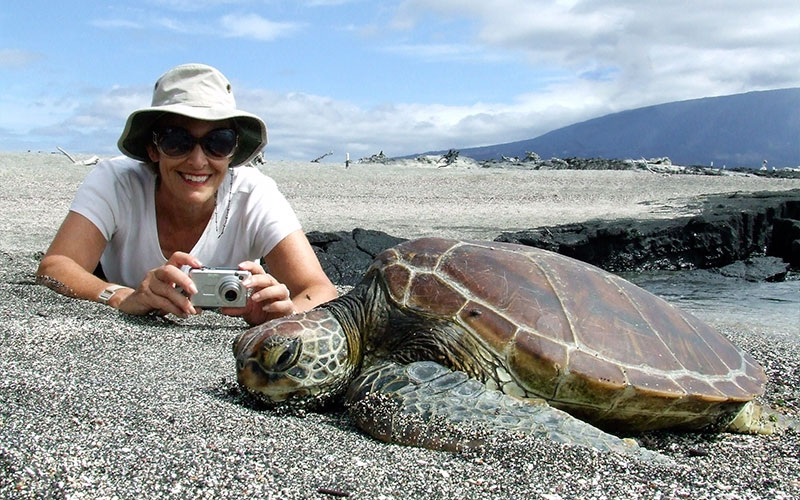
December:
Giant tortoise eggs begin to hatch, this will last until April
Green Sea Turtles often mating in shallow waters
Galapagos Mammals
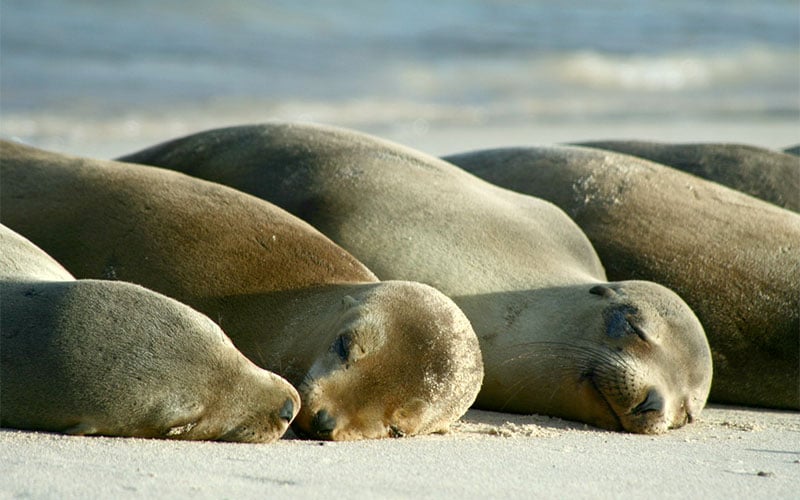
But why are Galapagos mammals and even birds and reptiles so tame or to be biologically correct less fearless than animals in other parts of the World?
Charles Darwin noticed this as well when he wrote that he was struck by five things in the Galapagos Islands; endemic flora and fauna, missing species such as amphibians, that species resemble but are different to their cousins on the South American continent, animals differ from one island to another and fifth – the tameness or fearless nature of the animals.
Biologists observe that in general animals and indeed mammals are less frightened and tamer on islands. Because there are fewer predators on islands they tend to be safer places to live. In a dangerous environment it makes sense for animals to flee when they sense even minimal danger but in ‘safe’ environments such as the Galapagos then running away when larger animals approach is just a waste of energy.
As you can imagine it’s actually a little more complex than this. All animals have an innate or genetic predator response. Galapagos mammals like all others are born with this response. They are genetically conditioned that they have no predators, at least on land. In addition to the innate predator response they have a learned predator response. So if a new predator shows up and starts eating them then they would after some time alter their behaviour to flee.
The Galapagos Islands more than most island groups have been without predators for most of their 4 million year existence. Human beings didn’t show up until around 400 years ago and although initially they hunted some species close to extinction, relatively speaking, the islands have been predator free for 99.99% of their history.
So now you know why Galapagos mammals just sit there posing for your photos. It’s not because they like their photos being taken but more that they have an innate and learned conditioning that tells them you and your camera are not dangerous.
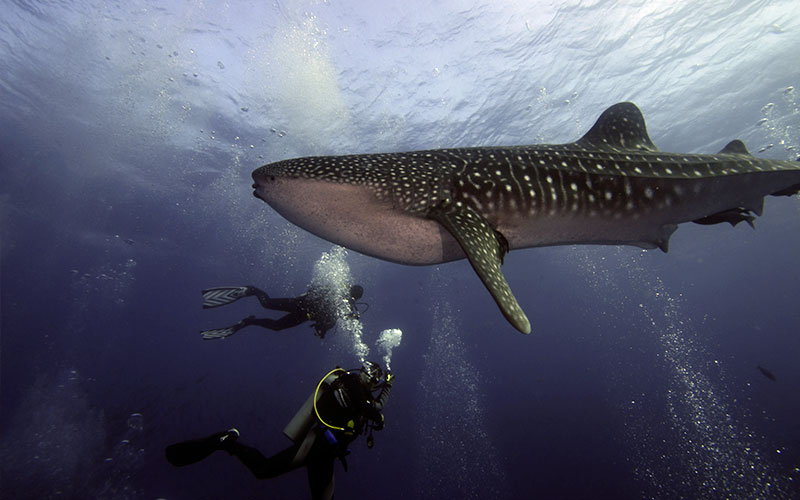
In common with most islands or island groups, excluding marine mammals there isn’t a tremendous variety of Galapagos mammals. This is because it’s just not easy to arrive at oceanic islands some 600 miles off the continental coast if you’re not swimming or flying. Perhaps half the mammal species were introduced by the first settlers and have become pests as they have wiped out native and endemic species. Here we’re talking about dogs, cats, donkeys, goats, pigs and 2 species of rat. Over the years they have damaged the natural ecosystem in the Galapagos by destroying vegetation, eating birds and eggs or even competing with and wiping out their Galapagos cousins. Conservation authorities have implemented programs to eradicate or remove these ‘invader’ species
For example the endemic Galapagos rice rat, which was thought to arrive from South America on vegetation rafts during a time span of hundreds of thousands of years can now only be found on Fernandina and Santa Fe islands as the black and brown rats that arrived on the first settler’s ships proved to be dominant on all the other islands leading to the rice rats demise. As a result this mammal is difficult to see now due to scarcity and limited distribution.
There are two types of bat on the Galapagos. The endemic Galapagos bat lives on the two most populated islands of San Cristobal and Santa Cruz, it feeds on moths and beetles. The native Hoary bat lives on the same islands and can be seen flitting around at night feeding on flying insects but during daylight hours they roost in mangrove trees. It’s also found in North America.
The Galapagos fur seal is classed as an endemic species because there is only one other colony in the world in northern Peru. Despite their name they are more closely related to sea lions than seals. They look similar to the Galapagos Sea Lion but are smaller with bulging eyes and more pronounced ears. Their coat appears to be furry and is much thicker. Even though there are similar numbers of Galapagos Fur Seals and their sea lion cousins, they appear rarer because they are out of sight living in cooler habitats such as rocky shores which offer a lot of shade.
They were nearly hunted to extinction for their insulating coats but they now number about 30,000 in total and can be best seen at the Puerto Egas tide pool inlets of Santiago Island and at the coral beach at Darwin Bay on Genovesa Island.
The remaining Galapagos mammal species are either dolphins or whales. One thing absolutely guaranteed to thrill you and have you rushing to the railings of our cruise yachts is the sighting of a huge and acrobatic Humpback Whale as you cruise the Galapagos waters. They are often seen breaching where up to 3/4’s of their huge 50 foot, forty ton bodies lift out of the water in an explosion of power, grace and agility. They’re best seen between June and October.
Another Galapagos whale that causes more than a stir of excitement is the Killer Whale. There is something chilling about seeing the 4 foot high dorsal fin of the ocean’s largest predator gliding over the ocean surface waters as it tracks unseen prey.
Other Galapagos whales are less common but the Pilot Whale and even ‘ole Moby Dick himself, the Sperm Whale frequent these plankton-rich waters.
You are more likely to see Bottle Nosed Dolphins or the Common Dolphin on board a cruise yacht. The former especially has a playful and inquisitive nature and loves to play in the slipstream water of the bow or the wake water. They travel in pods of up to 30 individuals and can be seen everywhere.
If you get the chance to snorkel or scuba then you are very likely to get further chances to interact with Galapagos mammals. Dolphins and fur seals are documented as approaching divers but it is the inquisitive Galapagos Sea Lion that comes within touching distant as they stare though your mask.
These are close encounters of the natural kind that linger in your memory long after you arrive home.
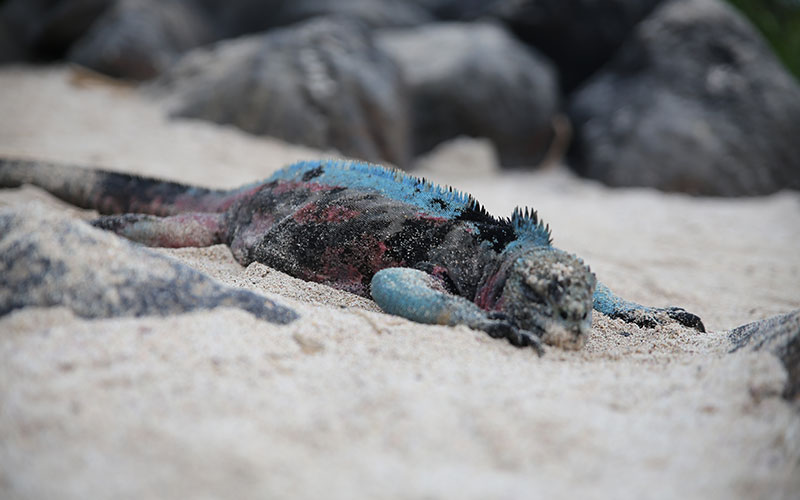
Galapagos Reptiles

In the Galapagos Islands, a variety of fascinating reptile species can be found. It is typical that islands far from the continent have few native mammal species. The isolation makes it hard for mammals to survive the long journey afloat at sea, but reptiles are a little harder in this regard. The reptilian ancestors of the tortoises and iguanas were able to survive the voyage.
The most iconic animals in the Galapagos are the giant tortoises. The name of the islands was inspired by them, in fact. Galápago is an antiquated Spanish word for “saddle.” The tortoises from some islands have shells with a saddle-like shape. In this way, the tortoises and islands earned their name. The giant tortoises of the Galapagos are the largest living on the planet today.

In the absence of large mammalian herbivores, the tortoises evolved to fill a unique ecological niche. The tortoise’s shell is characteristic to the type of habitats it lives in. In the humid highlands, they have dome-shaped shells and graze on low laying foliage. On arid islands, they have saddle-shaped shells and long necks to stretch their heads to reach higher vegetation.
The giant tortoises are symbols of ecological preservation and the fragility of the Galapagos ecosystems. Their numbers were decimated over the centuries as whalers slaughtered them for meat and oil. Introduced animals such as goats damaged their habitats, and feral cats and dogs preyed upon babies. Conservationists are hard at work to preserve the giant tortoises.
Visitors to the Galapagos Islands are sure to encounter giant tortoises when visiting the breeding centers located on various islands. A visit to these centers is educational and a place to see conservationists at work raising baby tortoises to be released in the wild when they are adults. The famous late Lonesome George, the last of the Pinta Island tortoises, lived in such a center.
Other noteworthy Galapagos reptiles are the iguanas. Their ancestors came from the South American mainland and diversified into land iguanas and marine iguanas as they took on different roles in their new environments. There are three species of land iguanas on the islands and several subspecies of marine iguanas throughout the archipelago.
The Galapagos land iguana lives on six different islands whereas a unique species is found on Santa Fe Island. The third species is the pink land iguana found only on the slopes of Wolf Volcano on Isabela Island. It is the most ancient species in the land iguana lineage but the most recent to be described scientifically.
The marine iguana is the only seafaring lizard in the world. These unusual reptiles dive into the ocean to eat algae off of the rocks beneath the waves. They return to the coast to bask in the warm sun after their dives in the chilly ocean water. They also have a unique glad in their nostrils to excrete excess salt from their bodies. With such unique residents, it is no wonder the Galapagos is a world famous wildlife destination.

